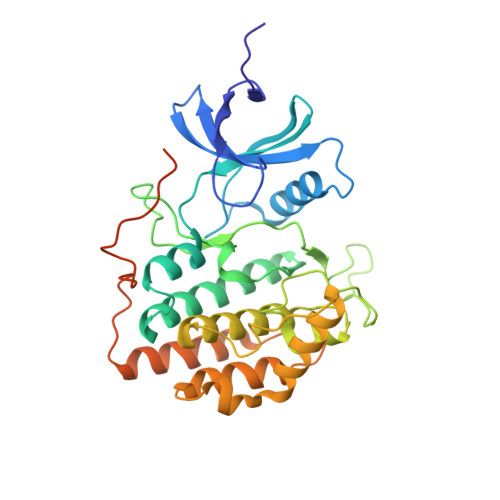Structure-Based Design of Potent and Selective CK1 gamma Inhibitors.
Huang, H., Acquaviva, L., Berry, V., Bregman, H., Chakka, N., O'Connor, A., DiMauro, E.F., Dovey, J., Epstein, O., Grubinska, B., Goldstein, J., Gunaydin, H., Hua, Z., Huang, X., Huang, L., Human, J., Long, A., Newcomb, J., Patel, V.F., Saffran, D., Serafino, R., Schneider, S., Strathdee, C., Tang, J., Turci, S., White, R., Yu, V., Zhao, H., Wilson, C., Martin, M.W.(2012) ACS Med Chem Lett 3: 1059-1064
- PubMed: 24900428
- DOI: https://doi.org/10.1021/ml300278f
- Primary Citation of Related Structures:
4HGL, 4HGT - PubMed Abstract:
Aberrant activation of the Wnt pathway is believed to drive the development and growth of some cancers. The central role of CK1γ in Wnt signal transduction makes it an attractive target for the treatment of Wnt-pathway dependent cancers. We describe a structure-based approach that led to the discovery of a series of pyridyl pyrrolopyridinones as potent and selective CK1γ inhibitors. These compounds exhibited good enzyme and cell potency, as well as selectivity against other CK1 isoforms. A single oral dose of compound 13 resulted in significant inhibition of LRP6 phosphorylation in a mouse tumor PD model.
Organizational Affiliation:
Departments of Medicinal Chemistry; Pharmacokinetics and Drug Metabolism; Oncology Research; and Molecular Structure, Amgen Inc. , 360 Binney Street, Cambridge, Massachusetts 02142, United States.
















